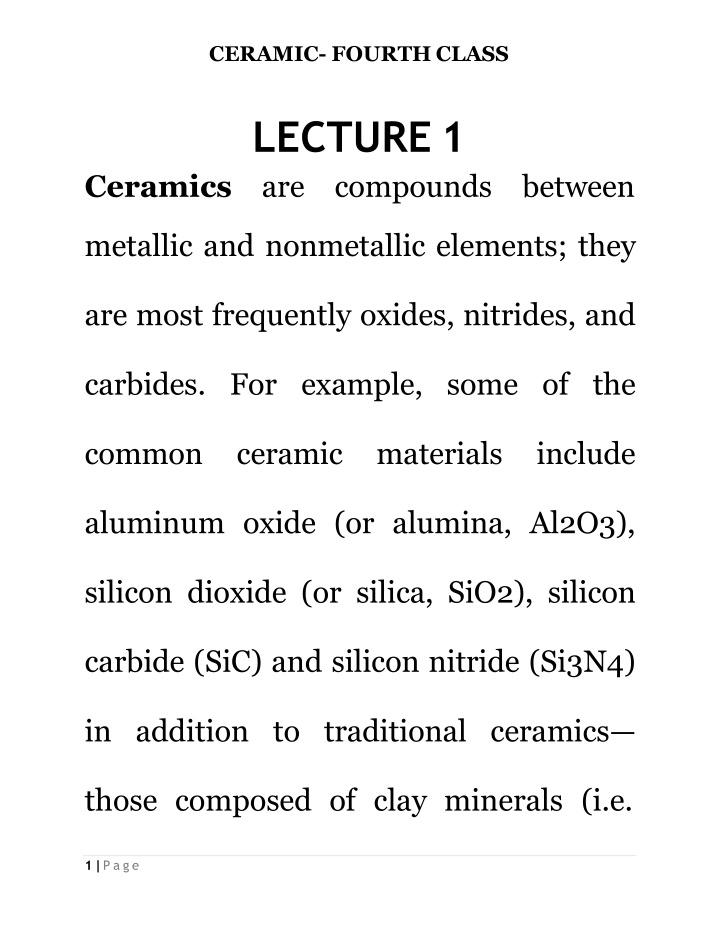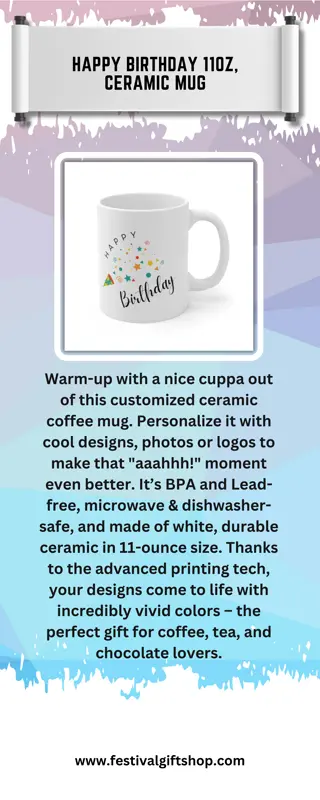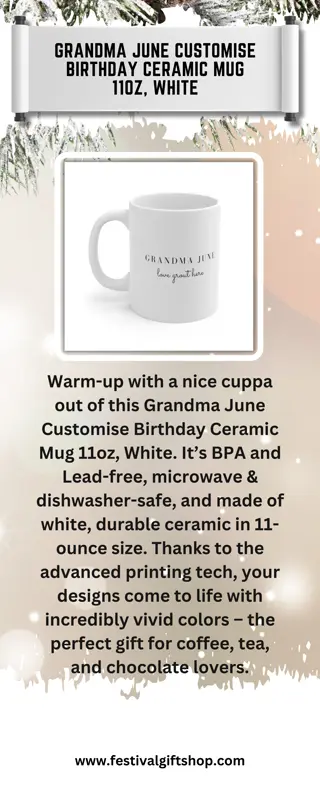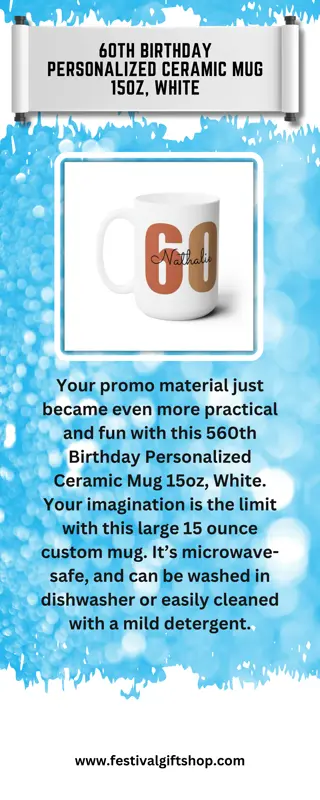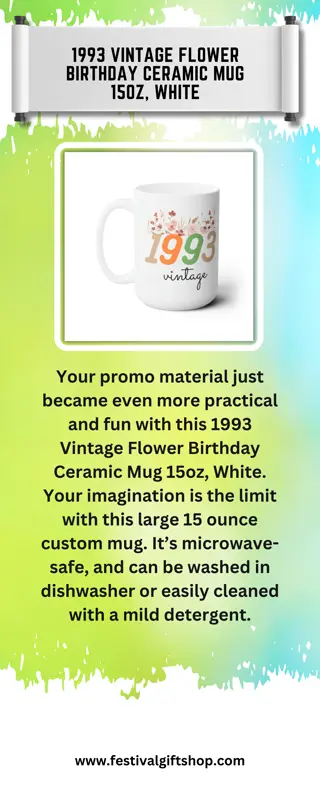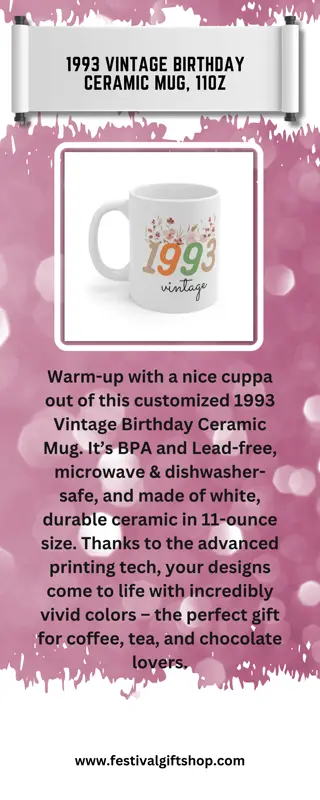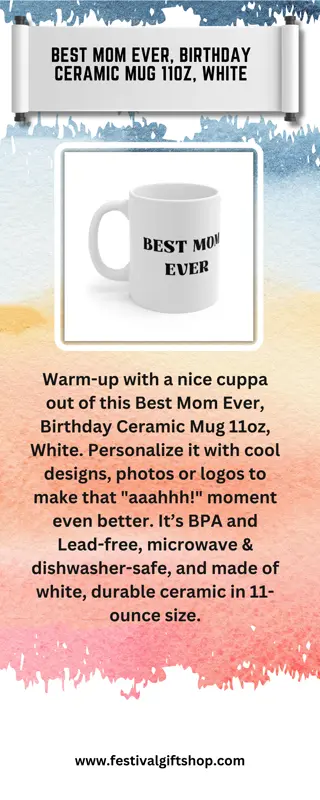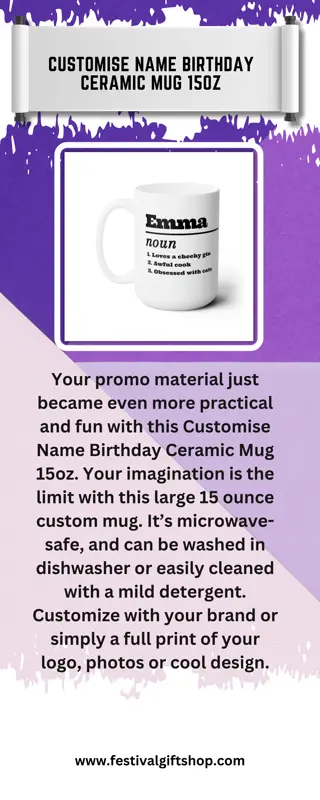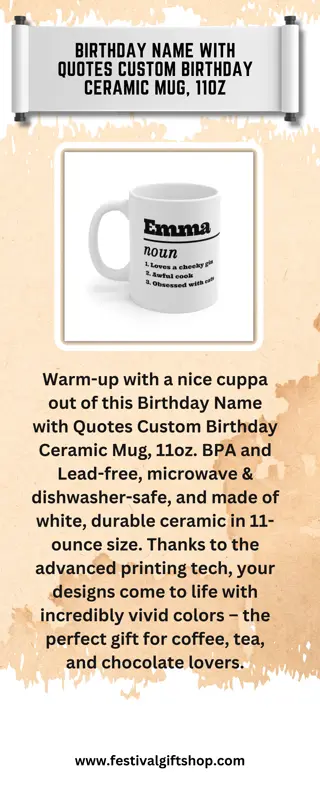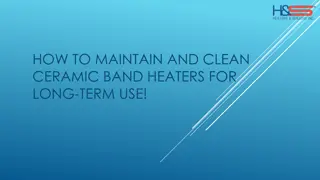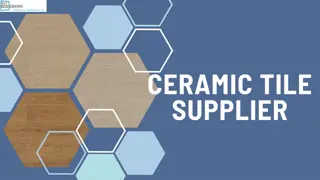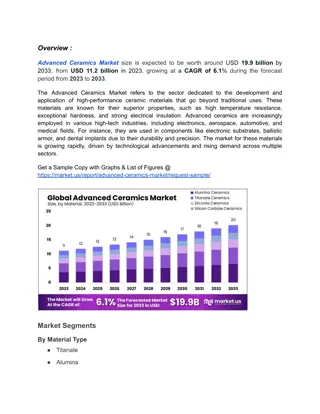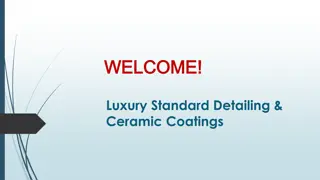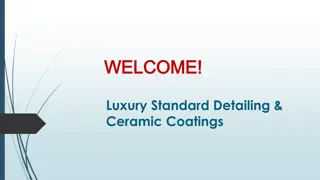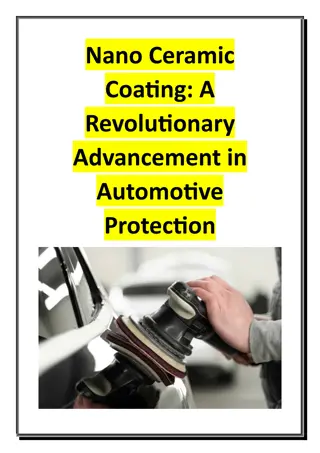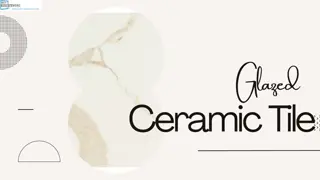Introduction to Ceramic Materials
Ceramics are compounds between metallic and nonmetallic elements, such as oxides, nitrides, and carbides. They have various applications and are crucial in industries like tableware production and high-temperature applications.
Download Presentation

Please find below an Image/Link to download the presentation.
The content on the website is provided AS IS for your information and personal use only. It may not be sold, licensed, or shared on other websites without obtaining consent from the author.If you encounter any issues during the download, it is possible that the publisher has removed the file from their server.
You are allowed to download the files provided on this website for personal or commercial use, subject to the condition that they are used lawfully. All files are the property of their respective owners.
The content on the website is provided AS IS for your information and personal use only. It may not be sold, licensed, or shared on other websites without obtaining consent from the author.
E N D
Presentation Transcript
CERAMIC- FOURTH CLASS LECTURE 1 are compounds Ceramics between metallic and nonmetallic elements; they are most frequently oxides, nitrides, and carbides. For example, some of the common ceramic materials include aluminum oxide (or alumina, Al2O3), silicon dioxide (or silica, SiO2), silicon carbide (SiC) and silicon nitride (Si3N4) in addition to traditional ceramics those composed of clay minerals (i.e. 1| P a g e
CERAMIC- FOURTH CLASS porcelain), as well as cement, and glass. Today ceramic may be defined as a product manufactured by the heat treatment of a material (or mixture of materials) which is inorganic and non- metallic. Types and Applications of Ceramics Ceramics can be classified according to their applications as follows: 2| P a g e
CERAMIC- FOURTH CLASS GLASSES Glasses are a familiar group of ceramics; containers and lenses represent their typical applications. They are noncrystalline silicates containing other oxides, particularly CaO, Na2O, K2O, 3| P a g e
CERAMIC- FOURTH CLASS and Al2O3, which influence the glass properties. A typical soda lime glass consists of approximately 70 wt% SiO2, the balance being mainly Na2O (soda) and CaO (lime). Possibly the two prime properties of these materials are their opticaltransparencyandtherelativeease of fabrication (manufacturing). GLASS CERAMICS Most inorganic glasses can be madeto transform from a noncrystalline state to 4| P a g e
CERAMIC- FOURTH CLASS one that is crystalline by theproper high- temperature heat treatment. This process is called crystallization, and the product is a fine-grained polycrystalline material which is often called a glass ceramic. The most common uses for these materials are tableware (dishes, plates etc.) and in high temperatures applications such as ovenware, oven windows primarily because of their 5| P a g e
CERAMIC- FOURTH CLASS strength and excellent resistance to thermal shock. CLAYPRODUCTS One of the most widely used ceramicraw materials is clay. This inexpensive ingredient, found naturally in great abundance, often is naturally used as mined (extracted) (without any upgrading of quality). Another reason for its popularity lies in the ease of forming; when mixed in the properproportions, 6| P a g e
CERAMIC- FOURTH CLASS clay and water form a plastic mass thatis very responsive to shaping. The formed piece is dried to remove some of the moisture, after firing at an elevated temperature to improve its mechanical strength. Most of the clay-based products are classified into two groups: the structural clay products and the whitewares. Structural clay products include building bricks, tiles, and drain pipes applications in which structural 7| P a g e
CERAMIC- FOURTH CLASS integrity is important. The whiteware ceramics become white after the high- temperature firing. Porcelain is included in this group. 8| P a g e
CERAMIC- FOURTH CLASS REFRACTORIES Another important class of ceramics that are utilized in large weights is the refractory (inflexible) ceramics. The significant properties of these materials include the ability to withstand high temperatures without melting or decomposing, and the capacity to remain unreactive or motivated when exposed to severe 9| P a g e
CERAMIC- FOURTH CLASS environments. In addition, the ability to provide thermal insulation is often an important consideration. Refractory materials are marketed in a variety of forms, but bricks are the most common. Typical applications include furnace coatings for glass manufacturing and metallurgical heat treatment. The performance of a refractory ceramic, to a large degree, 10| P a g e
CERAMIC- FOURTH CLASS depends on its composition. Thereare several classifications of commercial refractories according to the table below: ABRASIVES Abrasive ceramics are used to wear, grind, or cut away other material, 11| P a g e
CERAMIC- FOURTH CLASS which necessarily is softer. Therefore, the prime need for this group of materials is hardness or wear resistance; in addition, a high degree of toughness is essential to ensure that the abrasive particles do not easily fracture. Diamonds, both natural and synthetic (artificial), are utilized as abrasives; however, they are relatively expensive.Themorecommonceramic 12| P a g e
CERAMIC- FOURTH CLASS abrasives include silicon carbide, tungsten carbide (WC), aluminum oxide and silica sand. Abrasives are used in several forms bonded to grinding wheels, as coated abrasives. Coated abrasives are those in which an abrasive powder is coated on some type of paper or cloth material. Wood, metals, ceramics,and 13| P a g e
CERAMIC- FOURTH CLASS plastics are all frequently ground and polished using this form of abrasive. FormoreinformationandclarificationconcerningPiezoelectricCeramics visit https://youtu.be/Ez0GLKh7n24(CeramicAbrasiveRange) CEMENTS Cements are inorganic materials produced in extremely large quantities. The characteristic feature of these materials is that when mixed with water, they form a paste that subsequently sets (settle on, does not change its shape) and hardens. Also, 14| P a g e
CERAMIC- FOURTH CLASS some of these materials act as a bonding phase that chemically binds particulate aggregates into a single cohesive structure. The bond of the cement develops at room temperature. Portland cement is the most common type of cements. One important structure made of cement is concrete. Concrete is a mixture of cement, water, fine 15| P a g e
CERAMIC- FOURTH CLASS aggregate and coarse aggregate of sands or stones, which hardens to a stone-like mass. ADVANCED CERAMICS Many of our modern technologies utilize and will continue to utilize advanced ceramics because of their unique mechanical, chemical, electrical, magnetic, and optical properties and property 16| P a g e
CERAMIC- FOURTH CLASS combinations. Piezoelectric ceramics is an example of advanced ceramics. PiezoelectricCeramics: A few ceramic materials (as well as some polymers) exhibit the unusual phenomenon of piezoelectricity1 electric polarization2 (i.e., an electric field or voltage) is generated in the ceramic crystal when a mechanical strain (dimensional change) is imposed on it. The inverse 17| P a g e
CERAMIC- FOURTH CLASS piezoelectriceffectis also displayed by this group of materials; that is, a mechanical strain results from the imposition of an electrical field. Piezoelectric materials may be utilized as a converter between electrical and mechanical energies. One of the early uses of piezoelectric ceramics was in sonar, wherein underwater objects (e.g., submarines) are detected and 18| P a g e
CERAMIC- FOURTH CLASS their positions determined using an ultrasonic emitting and receiving system. A piezoelectric crystal is caused to oscillate (fluctuate) by an electrical signal, which produces high- frequency mechanical vibrations that are transmitted through the water. Upon encountering an object, these signals are reflected back, and another piezoelectric material receives this 19| P a g e
CERAMIC- FOURTH CLASS reflected vibrational energy, which it then converts back into an electrical signal. Distance from the ultrasonic source and reflecting body is determined from the gone (passed) time between sending and receiving events. For more information and clarification concerning Piezoelectric Ceramics visit https://youtu.be/Bxo2TihSrNg(What Is Piezoelectricity: Part 1) 20| P a g e
CERAMIC- FOURTH CLASS General Properties ofCeramic specific Ceramics generally have properties associated with them such as: Compressive strength: Ceramics are stronger in compression than in tension, whereas metals have comparable (equivalent) tensile and compressive strengths. This difference is important when we use ceramic components for load-bearing applications. It is necessary 21| P a g e
CERAMIC- FOURTH CLASS to consider the stress distributions in the ceramic to ensure that they are compressive. An important example is in the design of concrete bridges the concrete, a CMC (ceramic matrix ceramic), must be kept in compression. Ceramics generally have low toughness, although combining them in composites can dramatically improve this property. Brittleness: This probably comes from personal experiences such as dropping a 22| P a g e
CERAMIC- FOURTH CLASS glass cup or a plate. The reason that the majority of ceramics are brittle is the mixed ionic covalent bonding that holds the constituent atoms together. At high temperatures (above the glass transition temperature) glass no longer behaves in a brittle manner; it behaves as a viscous liquid. That is why it is easy to form glass into complicated shapes. So, what we can say is that most ceramics are brittle at room temperature but not necessarily at 23| P a g e
CERAMIC- FOURTH CLASS elevated temperatures. The brittle behaviour of ceramics gives them low fracture toughness. Ceramic materials are relatively stiff and strong stiffness and strength are comparable (similar) to those of the metals. In addition, ceramics are typically very hard. On the other hand, they are extremely brittle (lack ductility) and are highly vulnerable to fracture. 24| P a g e
CERAMIC- FOURTH CLASS 25| P a g e
CERAMIC- FOURTH CLASS Poor electrical and thermal conduction except for Diamond and the oxide ceramic, ReO3. The valence electrons are tied up in bonds and are not free as they are in metals. In metals, it is the free electrons that determine many of their electrical and thermal properties. 26| P a g e
CERAMIC- FOURTH CLASS Chemical insensitivity: A large number of ceramics are stable in both harsh chemical and thermal environments. Pyrex glass is used widely in chemistry laboratories specifically 27| P a g e
CERAMIC- FOURTH CLASS because it is resistant to many corrosive chemicals,stableathightemperatures(it does not soften until 1100 K), and is resistant to thermal shock because of its low coefficient of thermal expansion (33 10 7 K 1). It is also widely used in bakeware. 28| P a g e
CERAMIC- FOURTH CLASS So, they are more resistant to high temperatures and harsh environments than metals and polymers. Transparency: Many ceramics such as precious stones and optical fibres are 29| P a g e
CERAMIC- FOURTH CLASS transparent. Metals are transparent to visible light only when they are verythin, typically less than 0.1 m. Although it is always possible to find at least one ceramic that shows a typical behaviour, the properties we have mentioned here are in many cases different from those shown by metals and polymers. 30| P a g e
CERAMIC- FOURTH CLASS Fabrication Ceramics and Processing of One chief concern in the application of ceramic materials is the method of fabrication. Many of the metal-forming operations rely on casting and/or techniques that involve some form of plastic deformation. Since ceramic materials have relatively high melting temperatures, casting them is normally 31| P a g e
CERAMIC- FOURTH CLASS impractical. Furthermore, in most instances the brittleness of these materials prevents (prohibits) deformation. Some ceramic pieces are formed from powders (or particulate collections) that must ultimately be dried and fired. Glass shapes are formed at elevated temperatures from a fluid mass that becomes very viscous upon cooling. A scheme for the several types of 32| P a g e
CERAMIC- FOURTH CLASS ceramic-forming techniques is presented in Figure 1: scheme for ceramic Figure 1: A classification forming techniques. 33| P a g e
CERAMIC- FOURTH CLASS FABRICATION AND OF GLASSES ANDGLASS PROCESSING CERAMICS GlassProperties Before we discuss specific glass-forming techniques, some of the temperature sensitive properties of glass materials must be presented. Glassy, or noncrystalline, materials do not solidify in the same sense as do those that are crystalline. Upon cooling, a glass becomes more and more viscous in a 34| P a g e
CERAMIC- FOURTH CLASS continuous manner with decreasing temperature; there is no definite temperature at which the liquid transforms to a solid as with crystalline materials. In fact, one of the distinctions between crystalline and noncrystalline materials lies in the dependence of specific volume (or volume per unit mass) on temperature, as illustrated in Figure 2. 35| P a g e
CERAMIC- FOURTH CLASS Figure 2: Contrast of specific volume versus- temperature behavior noncrystalline materials. Crystalline materials solidify at the melting Characteristic of the noncrystalline state is the glass transition temperature Tg. of crystalline and temperature Tm 36| P a g e
CERAMIC- FOURTH CLASS For crystalline materials, there is a discontinuous decrease in volume at the melting temperature Tm. However, for glassy materials, volume decreases continuously with temperature reduction; a slight decrease in slope of the curve occurs at what is called the glass transition temperature, below this temperature, the material is considered to be a glass; above, it is first a super cooled liquid, and finally a liquid. 37| P a g e
CERAMIC- FOURTH CLASS Also important in glass-forming operations are theviscosity temperature characteristics of the glass. Figure 3 plots the logarithm of viscosity versus the temperature for fused silica, high silica, borosilicate, and soda lime glasses. 38| P a g e
CERAMIC- FOURTH CLASS Figure temperature for fused silica and three silica glasses. 3: Logarithm of viscosity versus 39| P a g e
CERAMIC- FOURTH CLASS On the viscosity scale several specific points that are important in the fabrication and processing of glasses are labeled: 1.The melting point corresponds to the temperature at which the viscosity is 10 Pa-s (100 P); the glass is fluid enough to be considered a liquid. 2.The working point represents the temperature at which the viscosity is 103 40| P a g e
CERAMIC- FOURTH CLASS Pa-s (104 P); the glass is easily deformed at this viscosity. 3.The softening point, the temperature at which the viscosity is 4x 106Pa-s (4x 107P), is the maximum temperature at which a glass piece may be handled without causing significant dimensional alterations. 4.The annealing point is the temperature at which the viscosity is1012 Pa-s (1013P); at this temperature,atomic 41| P a g e
CERAMIC- FOURTH CLASS diffusion is sufficiently rapid that any residual stresses may be removed within about 15 min. 5. The strain point corresponds to the temperature at which the viscosity Pa-s becomes 3 x 1013 (3 x 1014P); for temperatures below the strain point(less than 450 0C for soda lime glass for example), fracture will occur before the beginning of plastic deformation. The 42| P a g e
CERAMIC- FOURTH CLASS glass transition temperature will be above the strain point. Most glass-forming operations are carried out within the working range between the working and softening temperatures. Of course, the temperature at which each of these points occurs depends on glass composition. For example, the softening points for soda lime and 96% silica 43| P a g e
CERAMIC- FOURTH CLASS glasses from Figure 3 are about 700 and 1550 0C, respectively. That is, forming operations may be carried out at significantly lower temperatures for the soda lime glass. 44| P a g e
CERAMIC- FOURTH CLASS GlassForming Glass is produced by heating the raw materials to a high temperature above which melting occurs. Silica is usually supplied as common quartz sand, whereas Na2O and CaO are added as soda ash (Na2CO3) and limestone (CaCO3). For most applications, especially when optical transparency is important, it is essential that the glass 45| P a g e
CERAMIC- FOURTH CLASS product be homogeneous and pores free. Homogeneity is achieved by complete melting and mixing of the raw ingredients. Four different forming methods are used to fabricate glass products: pressing, blowing, drawing, and fiber forming. Pressing is used in the fabrication of relatively thick-walled pieces such as plates and dishes. The glass piece is formed by pressure application in a 46| P a g e
CERAMIC- FOURTH CLASS graphite-coated cast iron mold having the desired shape; the mold is normally heated to ensure an even (flat/smooth) surface. Although some glass blowing is doneby hand, especially for art objects, the process has been completely automated for the production of glass jars (containers), bottles, and light bulbs. The several steps involved in one such technique are illustrated in Figure 1. 47| P a g e
CERAMIC- FOURTH CLASS A temporary shape is formed by mechanicalpressinginamold.Thispiece is inserted into a finishing or blow mold and forced to fit in the mold contours 48| P a g e
CERAMIC- FOURTH CLASS (outlines/shape) by the pressure created from a blast of air. Drawing is used to form long glass pieces such as sheet, rod, tubing, and fibers, which have a constant cross section. Continuous glass fibers are formed in a rather sophisticated drawing operation. The molten glass is placed in a platinum heating chamber (small room). Fibers are formed by drawing the molten glass through many small holes (outlets) 49| P a g e
CERAMIC- FOURTH CLASS at the chamber base. The glass viscosity, whichiscritical,iscontrolledbychamber and outlets temperatures. It may also be fabricated by hotrolling. Flatness and the surface finish may be improved significantly by floating or moving the sheet on a bath of molten tin at an elevated temperature; the piece is slowly cooled and subsequently heat treated by annealing. glassforming.mp4 For more infovisit 50| P a g e
